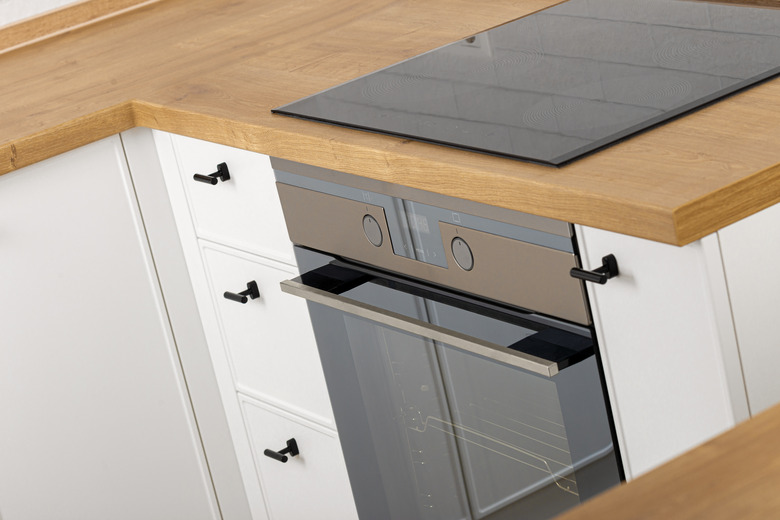The GE Profile Convection Fan Is Not Spinning
It's a clear sign of trouble if your convection oven fan is not spinning. The fan in a GE Profile convection range serves two purposes. The first is to circulate hot air rapidly around the food in the oven cavity, shortening cooking time and maintaining even cooking temperatures. The second role is to cool the oven once a cook or clean cycle is complete. Its spinning operation is preprogrammed into the oven controls and is triggered to run, or cease running, based on what is happening with the range at any given time, which optimizes efficiency and limits the owner's control over fan function.
When the Fan Should Engage
When the Fan Should Engage
The fan is interconnected with various other oven controls and regulators, sometimes appearing as though it has a mind of its own. According to GE, common causes of concern around fan operation stem from these triggering features. You want to allow the oven to come completely up to the programmed temperature before the fan begins spinning. The oven will signify this stage by emitting three short beeps. If the fan does not switch on once the oven reaches the programmed heat, or never turns on, the fan capacitor may be faulty or blown or the convection motor may be failing, requiring replacement.
What Will Disengage Fan Operation
What Will Disengage Fan Operation
The fan will always disengage when the oven door is opened. To see if the fan blades are spinning, turn on the interior light, bend down and look in through the oven window. Refrain from opening the oven door during any convection cycle to keep the fan running. Each time you open the door even a crack, you'll not only lose heat, but, by design, the convection fan will cease spinning.
Convection Fan Intermittency and Sounds
Convection Fan Intermittency and Sounds
Convection fans will not always spin throughout the entire cook cycle. Expect to hear the fan cycle on and off during the convection cooking settings, emitting a light whirring sound, which is normal. If the fan makes squealing or clunking sounds, the mounting screws may have come loose, the fan blade may be warped or the ball bearings in the fan may have seized up. Repair or replacement of the fan components may be required to alleviate this.
Also, consider that the fan will typically continue to run for up to one and a half hours after the oven controls have been turned off as part of the cool down. If the fan runs longer than this when the oven feels cool to the touch, turn off the power to the oven at the circuit breaker for 30 seconds to reset the electronic controls and stop the fan. If this continues to occur, call a service technician because a temperature fuse or door switch may require replacement or servicing.
Convection Oven Fan Replacement
Convection Oven Fan Replacement
Most recent GE convection ovens have electronic controls and digital read-out displays. A large number of error codes can pop up onto the display to alert you to the fact that the oven is not working properly or that the controls themselves may be failing. Error codes vary by GE oven product line and by convection model. The specific code translations can be found in the manual for your oven or GE's website.
Sometimes shutting off the circuit breaker that the range or oven is connected to for 30 seconds will clear the error or function code, restoring normal fan operation. However, when the code indicates that the control panel itself is compromised, a replacement panel may be required. Convection oven fan replacement is a significant task, and not one that's suited to casual DIY.
